
OFFICIAL PUBLICATION OF THE MINNESOTA TURF AND GROUNDS FOUNDATION VOL. 32, NO. 1 SPRING | SUMMER 2024 MTGF
The mission of the Minnesota Turf and Grounds Foundation is to promote the Green Industry in Minnesota through support of research, education and outreach at the University of Minnesota and elsewhere.
8, 2024 NORTHERN GREEN OUTDOORS MAPLEWOOD, MINNESOTA
MTGF Clippings
Clippings
OCTOBER

BOARD OF DIRECTORS
Officers
President Sam Bauer
MPSFMA
Ramy Turf
Vice President
Dominic Pierre
MAC Union Cemetery
Secretary/Treasurer
Tom Redmann MASMS Consultant
Treasurer Steve Balfany MTA Balfany Farms
Ex-Officio
Jamie Bezanson MGCSA Highland Park Golf Course
Directors
MASMS
Tracy Closson
Northfield Schools
MGCSA
Chris Aumock
MGCSA
MGCSA
Jason Scharfencamp MGCSA
MPSFMA
Marcus Campbell
St. Paul Saints Baseball Club
MSA
Manuel Jordán
Heritage Shade Tree Consultants
MTA
Bryan Lawrence
Rocket Turf & Nursery
MTSC
Brent Benike
Northern Excellence Seed
VendorJimRepresentative O’Neill Eco Works Supply
VendorJamesRepresentative Wolfin
Twin City Seed Company
University of Minnesota
Turfgrass Extension
Jon Trappe
University of Minnesota
University of Minnesota
Turfgrass Extension
Dr. Eric Watkins
University of Minnesota
University of Minnesota
Dept. of Forest Resources
Ryan Murphy
University of Minnesota *
Executive Director
Jeff Turtinen
763-703-4983
turtinen@mtgf.org
P. O. Box 617
Wayzata, MN 55391
www.mtgf.org
The Business of the Minnesota Turf and Grounds Foundation
By SAM BAUER President Minnesota Turf and Grounds Foundation
The Future is Bright for MTGF
For over 20 years the Minnesota Turf and Grounds Foundation has donated funds towards cutting edge research in the green industries throughout Minnesota. This is something we are very proud of. It is likely of no surprise to you that there have been some ups and downs, some years where the funding availability has fallen woefully short of our expectations. Covid and the impact on our trade show in 2021 was certainly one of those years. While we are not exactly back on par with some of our highest giving years (2009 being the highest with $138,000 donated), we are witnessing some good momentum following a successful conference at the RiverCentre in St. Paul this year.

About a month ago, the MTGF board reviewed proposals and presentations from three academic research programs that we have supported in the past. In total there was $70,000 requested from these programs and we were able to fund all three requests. The U of M Turf Science program was awarded $45,000, the U of M Department of Forest Resources and Plant Pathology received $19,000, and the U of M Crookston received $6,000. We are confident that these researchers will do good work with this money, and we look forward to seeing the results of their research in the future.
Research is the backbone of most industries. It pushes our discipline forward. In our world, high quality research is important to improve our environmental stewardship and to create landscapes that can be used by many. From golf courses, sports fields, parks, cemeteries, and everything in between, it is our industry that benefits from the research being conducted locally.
It’s gratifying to be in the position to fund the research requests that we received this year. Clearly, the researchers submitting proposals have also re-calibrated their expectations of just how much money we, the MTGF, have to work with. While we have a long way to go to get back to our historical giving amounts, I think the future of our fundraising efforts are very bright.
You can support the MTGF by taking part in one of the educational and networking events that we offer along with the MNLA. The Northern Green is being held again at the St. Paul RiverCentre from January 21-23, 2025. This is our second year at the RiverCentre and with just a few minor tweaks (walk up traffic, extended trade show), it is sure to be a great event. Additionally, there is an outdoor trade show, “Northern Green Outdoors,” being held at Aldrich Arena & Grounds on October 8th, 2024. With the outdoor option, there will be opportunities for demonstrations, interactive and hands-on experiences. Please consider joining us for this new endeavor.
As the growing season is in full swing here, I wish you all the best for a productive year. The growing season gets quite busy for many of us, and for whatever it’s worth, I encourage you to take some much-needed time with your loved ones at every opportunity. After all, they are the reason we do what we do in the first place.
Have a great one!
 Sam Bauer President Minnesota Turf and Grounds Foundation
Sam Bauer President Minnesota Turf and Grounds Foundation
* * *
www.MTGF.org
2 MTGF CLIPPINGS ~ SPRING | SUMMER 2024 PRESIDENT’S REPORT




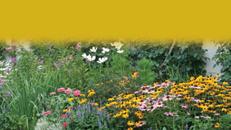


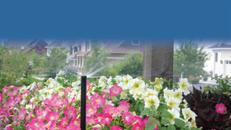
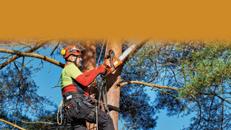


Inside this Issue of MTGF Clippings: 2 President’s Report: The Future is Bright for MTGF By Sam Bauer, MTGF President 5 Conserving Minnesota’s Tree Heritage And Looking to the Future By Brian Luedtke, University of Minnesota 10 Funding: Teaching, Research & Outreach Programs at UMN - $19,000 15 Funding: Putting Greens Research At UMN | Crookston - $6,000 20 Funding: Turfgrass Science Research Program at TROE Center - $45,000 22 MPSFMA Wins Its 3rd Green Industry Bowling Fundraiser Tournament Title 23 October 8 Northern Green Outdoor Trade Show in Maplewood 24 Support MTGF with a Donation to Help Fund Local Green Industry Research www.MTGF.org SPRING | SUMMER 2024 ~ MTGF CLIPPINGS 3 Turf, Grounds, & Snow Management Professional Gardening Services Garden Center/Grower Tree Care/Arborist Landscape/Hardscape Contractor Landscape Design/ Landscape Architecture Golf Water/Irrigation Expanding the impact of Northern Green with an additional annual event OUTDOORS! OUTDOORS Northern Green is going outdoors on Oct. 8 at Aldrich Arena + Grounds in Maplewood. This event includes an outdoor trade show and interactive, hands-on education for your Northern Green Village! The addition of an outdoor component to the Northern Green umbrella allows for more demonstrations, handson education and installations, and interactive experiences at the one-day event on October 8, 2024. Plus, suppliers will be able to feature outdoor equipment in its natural environment – test drive a mower, take a spin in that miniexcavator, or purchase a plow for the upcoming snow season. Featuring a large outdoor exhibit area and indoor exhibits, too. Lunch is included, and a happy hour event will close the day. October 8, 2024 LOCATION: Aldrich Arena + Grounds, Maplewood SAVE THE DATES: Jan. 21-23, 2025 LOCATION: Saint Paul RiverCentre MINNESOTA TURF & GROUNDS FOUNDATION FUNDING202420232022202020192018201720162015201420132012201120102009200820072006200520042003 RESEARCH DOLLARS FROM 2001-2002 TURFGRASS SCIENCE RESEARCH PROGRAM SUPPORT45,00035,00045,00050,00065,00065,00060,00060,00070,00050,00050,00050,00047,00037,11460,50020,00020,00020,00020,0007,500 TROE CENTER OPERATIONS 9,62510,00010,00010,00020,000 TROE CENTER BUILDING PRE-DESIGN 25,00021,056 DR. ERIC WATKINS RESEARCH 20,00020,000 20,00015,000 BRAD PEDERSEN LANDSCAPE PROGRAM 11,00017,0005,0005,000 UM FOREST RESOURCES AND PLANT PATHOLOGY PROGRAMS50,000 DR. GILlMAN TREE RESEARCH / DUTCH ELM DISEASE 2,7504,07713,00010,000 DUTCH ELM DISEASE / ELM RESISTANCE MECHANISMS49,71560,00030,00020,00020,00015,00015,00012,00015,00010,00026,000 DR. ROBERT BLANCHETTE DED / MSA SUPPORT9,5007,5005,700 10,4157,40010,00010,0002,500 UM YOUTH ENGAGEMENT IN ARBORICULTURE9,5007,5009,3007,250 UM CONSERVATION9,975 UM ELM SELECTION6,250 UM PRUNING5,500 UM ESP RESEARCH5,500 BOB MUGAAS / UMORE PARK TECHNICIAN 3,5003,500 ARBORETUM TURF & GROUNDS RESEARCH 9002,000 UM HELP LINE 3,000 ECONOMIC IMPACT STUDY 15,73310,518 NATIONAL TURF RESEARCH INSTITUTE 500500 GRABOWSKI / MALVICK WHITE MOLD RESEARCH 3,5402,0002,0003,000 DR. JUZWICK OAK WILT STUDY10,0003,250 DR. WALKER MINERALIZABLE NITROGEN STUDY10,00010,0005,0005,000 DR. KRISTINA WALKER | UMN CROOKSTON6,0005,0005,0005,000 SAM BAUER CONVERSION TO LOW-INPUT TURFGRASS 4,000 BAUER & ORSHINSKY PLANT DEFENSE 4,000 MARY MEYER 10 PLANTS THAT CHANGED MINNESOTA 5,000 UM FELLOWSHIP ENDOWMENT FUND 15,00015,00015,00015,00065,000 ORSHINSKY PATHOLOGIST POSITION10,00010,00010,000 TREE TRUST - GRAVEL BEDS10,000 TREE TRUST - GREEN TEENS15,000 OTHER 1,198 TOTALS70,00050,00065,000100,000106,250134,715120,000120,000110,00089,000110,79085,00076,00071,014138,00038,11375,50889,095118,50081,05635,000 TOTAL DOLLARS SINCE 2001 = $1,937,291



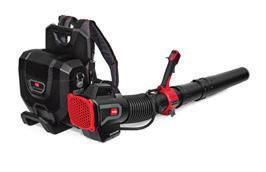

Increase the flexibility and versatility of your fleet with MTI’s extensive range of hybrid and battery-powered turf solutions.
Backed by more than 70 years of industry expertise, MTI offers battery-powered and hybrid products engineered to reduce emissions, noise pollution and operating costs while increasing flexibility and versatility. Offering the top brands in the industry, we provide the tools and support you need to create safe, inviting, and sustainable outdoor spaces.
Contact us today for an on-site product demonstration or to learn more.
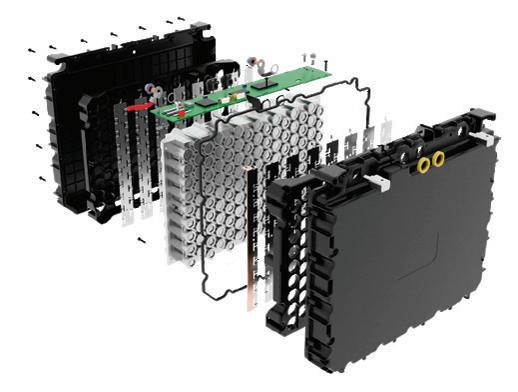
The HyperCell Electric Power System’s proprietary design centers on an intelligent, modular Battery Management System (BMS) that balances heat to maximze battery life while also providing safeguards, diagnostic information and charger control. Designed for real work and hard jobs, the HyperCell power system places a priority on efficiency and extended life, allowing you to work harder, longer.
GOLF, SPORTS FIELDS & GROUNDS EQUIPMENT & IRRIGATION I LANDSCAPE CONTRACTOR EQUIPMENT
MTIDISTRIBUTING.COM I INFO@MTIDISTRIBUTING.COM I 888.537.2484 COMPLETE SOLUTIONS WITH CONSISTENT, RELIABLE SERVICE, EVERY DAY.
ELECTRIC POWER SYSTEM
HyperCell
Conserving Minnesota’s Tree Heritage And Looking to the Future
By BRIAN LUEDTKE University of Minnesota
The prevailing winds of change are howling from every direction. Escape from one only seems to invite another. Tree managers are faced with what seems like an endless onslaught of issues to combat; insects, fungi, road salt, drought, budget committees, public perception, finding qualified contractors. With these variables in mind, it is difficult to keep trees healthy and safe in the urban environment, and every new year seems to add extra complications. Finding better ways to decrease the costs of management and increase survival rates of highest value trees could pay off for managers. Mature trees provide a considerably greater benefit to the urban ecosystem than even the same volume of newly planted trees. These trees provide people with a sense of place and increase our quality of life. They provide sustenance for more organisms than one could ever count. They uptake storm water and decrease dust and noise pollution.

locals who, like us, gained some benefit from keeping the trees around. In fact, there are strong correlations between successful human civilizations surviving the test of time and their respect for, and management of, their trees. Imagine an empire that utilized trees in producing their warships and weaponry but didn’t replant or manage the next generation of trees. They wouldn’t last long.
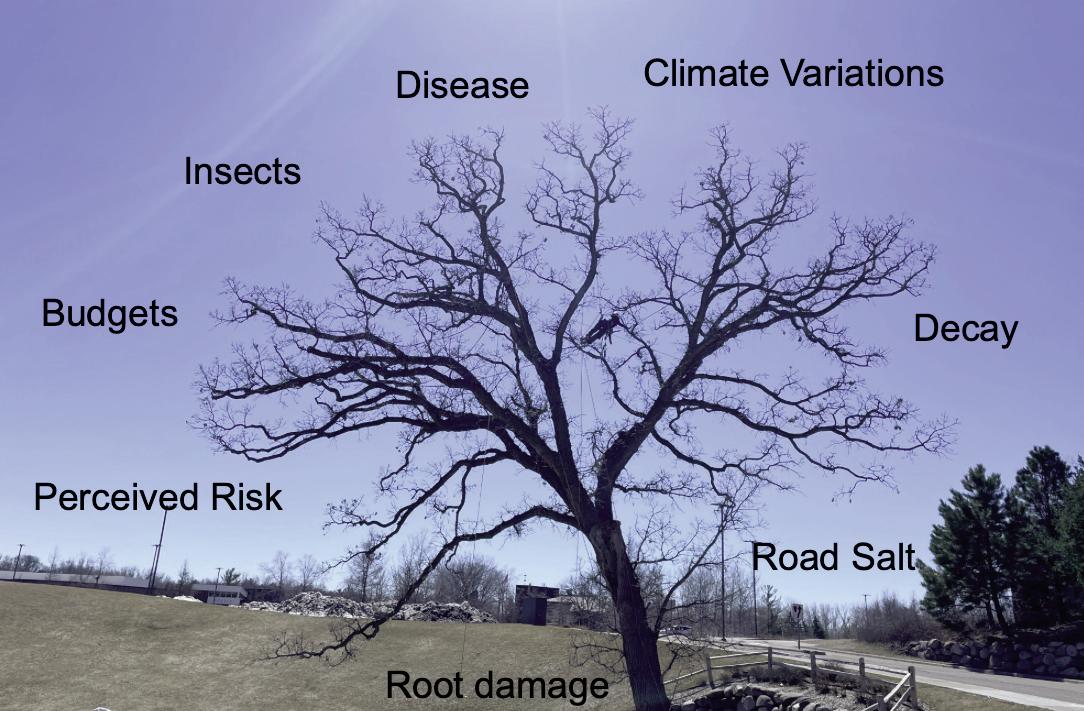
Issues that Affect Tree Health And Their Management
There are many variations of acceptable mature tree management practices around the world. Most of these practices were developed over extended periods of time by
In Minnesota, we have lost most of the knowledge of how the long-term inhabitants managed their urban shade trees. We know fire was regularly used to clear and manage land, but further definitive knowledge has disappeared. Also, modern society has demanding expectations of safety and resilience in our modern, stressful urban environments. Fire has been eliminated. Flooding is a thing of the past. Ecological disturbances, which are normal, are no longer acceptable because someone built a housing development, golf course, and/or shopping center there and the trees add value to the space. This makes managing trees in these environments difficult - the natural processes are not allowed to do their job. To add complexity, Minnesota is home to well over 50 native shade tree species and over 100 species of shade tree if you include introduced species. In addition, the climate seems to be shifting and soon we will be host to many more species as well as an increasing buffet of insect and disease issues. Management is going to get more complicated. This can also be read as; management is going to get more expensive.
So, what is a mature tree? A tree’s stage in life determines this, not necessarily how old it is. Much like how some humans can be very mature at a young age (think Mozart, Joan of Arc, Alexander the Great) or very immature at an older age (Kanye West, Elon Musk). There are roughly four stages of maturity for trees. The first stage would be akin to early childhood. The tree is a seedling or sapling and is busy establishing a root system. The second stage would be closer to adolescence and is known as the juvenile stage. In this stage the tree is rapidly growing, chasing any available light and resource.
(Continued on Page 6)
www.MTGF.org SPRING | SUMMER 2024 ~ MTGF CLIPPINGS 5
Minnesota’s Tree Heritage-
(Continued from Page 5)
The third stage is mature, where the tree has grown to its ideal size, is capable of reproduction, and is comfortable with its place in the world. These trees tend to have lots of nooks and crannies for other organisms to live, and their flowers and seeds feed many creatures as well as the soil. You can see the change from juvenile to mature by looking at the bark of a tree. Juvenile trees tend to have smoother and simpler bark, while mature trees tend to have thicker, ridged, or peeling bark. The fourth stage is sometimes called over-mature or veteran. This is a tree that is in the process of shrinking itself to a smaller and more stable size so that it can re-establish its structure and form a new canopy. This process is called retrenchment. These trees usually have gnarly features from weathering storms and natural events such as big hollows, cracks, and torn off limbs. These features provide valuable habitat for many creatures such as cavity nesting birds like Barred Owls and Wood Ducks. A healthy forest has a good mix of trees in all stages of life.

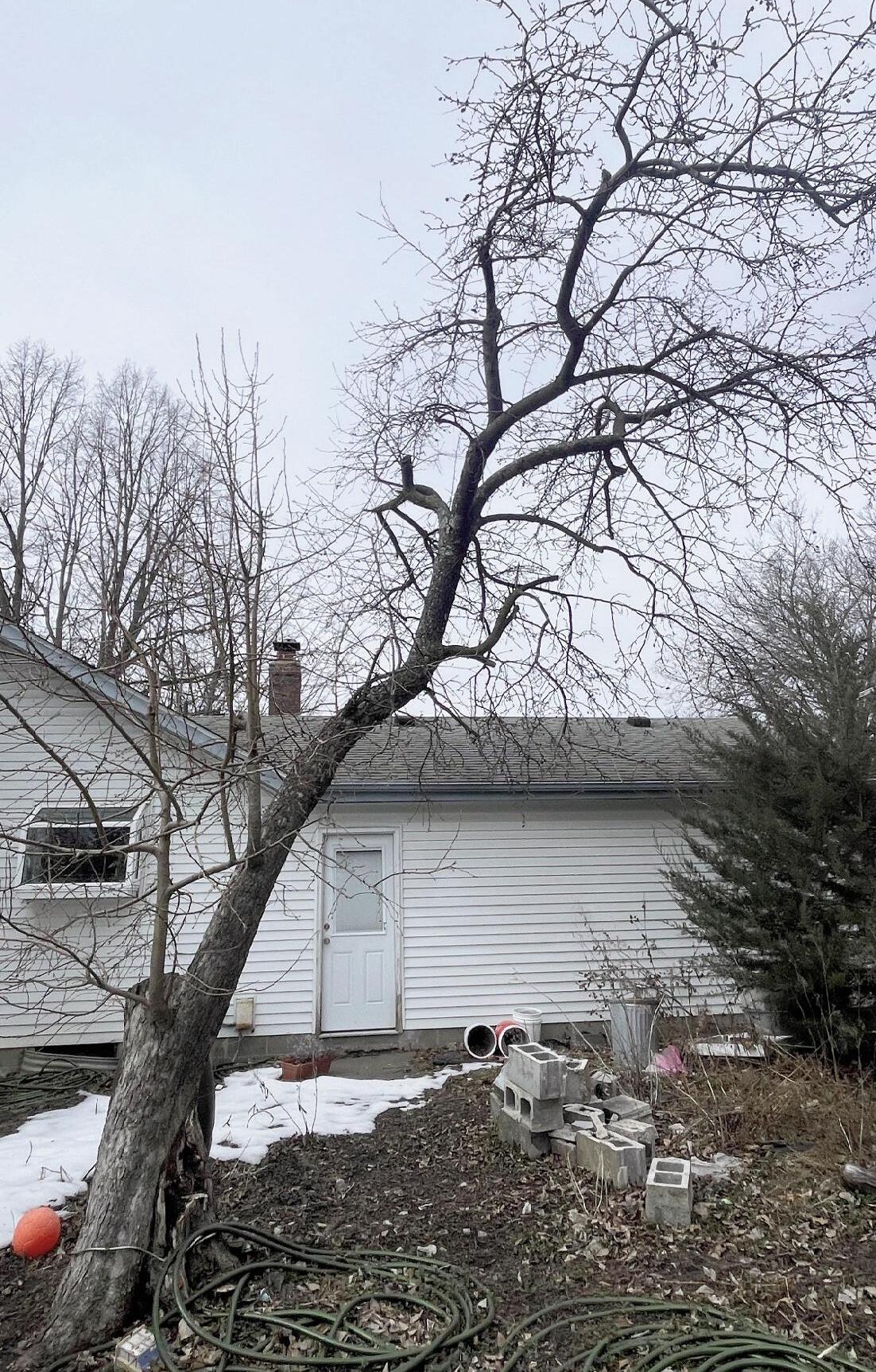
If mature and over-mature trees with habitat features, like hollows, are so good, why do we remove so many of them? The answer is simple, risk, whether perceived or real. In some cases, the habitat feature could be compromising the structure of a tree making it more likely to fail in a storm event. This is of no consequence in a natural area as it feeds the soil, creates more habitat, and opens space for new trees to fill in. However, if this same tree was over powerlines, houses, or play areas, failure could be quite serious and result in damage to people or property. In some cases, the habitat feature can look worse than it actually is which can lead to the unnecessary removal of the tree. The risk related to retaining trees that have habitat features is incredibly difficult to calculate, and tree preservation techniques require considerably more skill and knowledge than simply removing the tree. And, of course, there is always the chance that, after investing in preservation, the tree eventually needs removal anyways. For most managers, removal is the easier approach, and they can go about focusing on other responsibilities.
(Continued on Page 7)
www.MTGF.org 6 MTGF CLIPPINGS ~ SPRING | SUMMER 2024
This King Crab is in retrenchment. The preserves made from this tree's fruit give joy to many every year.
Minnesota’s Tree Heritage-
(Continued from Page 6)
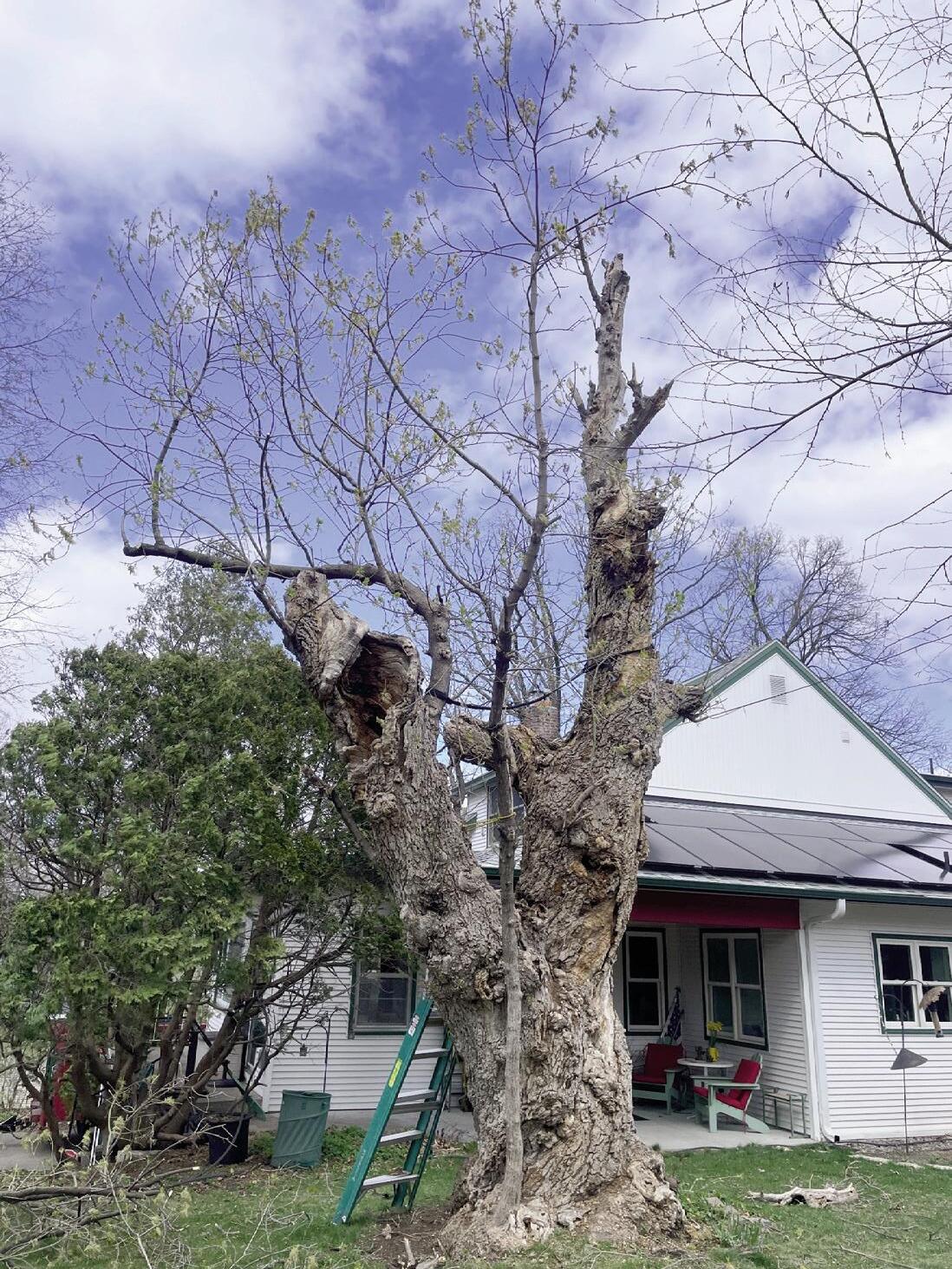
This Box Elder, in retrenchment, provides habitat and food for an entire village of insects and small mammals. It also brings the tree manager joy by rekindling memories of watching two generations grow up playing under this tree.
How do we keep more mature and over-mature trees around? The Conservation Arboriculture of MN (ConsArbMN) research program led by the UFOR lab at the Dept. of Forest Resources of the University of Minnesota - Twin Cities campus is working on developing a Minnesota tree species specific mature tree management system. Through a multi-faceted 10-year study, which began in 2019, the 13 most common large shade trees in the Twin Cities area are being intimately studied to decipher appropriate, and effective, mature tree management practices. The initial work was funded by the MTGF along with several municipal partners.
Management techniques such as crown reduction, decay diagnostics, structural support systems, crown modeling, and advanced pathology such as DNA extraction of insect larvae and decay fungi are being documented and explored on over 37 trees on multiple sites as well as stand level management across 3 woodlots. This first group of species will be used to develop replicable protocols for developing management techniques for other species and geographic locations.
ConsArbMN aims to assist tree managers by developing
a science-based local standard of care, as well as detailed individual species profiles, which will decrease the education and experience necessary for arborists and tree managers to be both comfortable and successful retaining large trees into perpetuity. By making this information more accessible, the barriers to tree preservation will decrease and, therefore, costs to managers will be reduced.
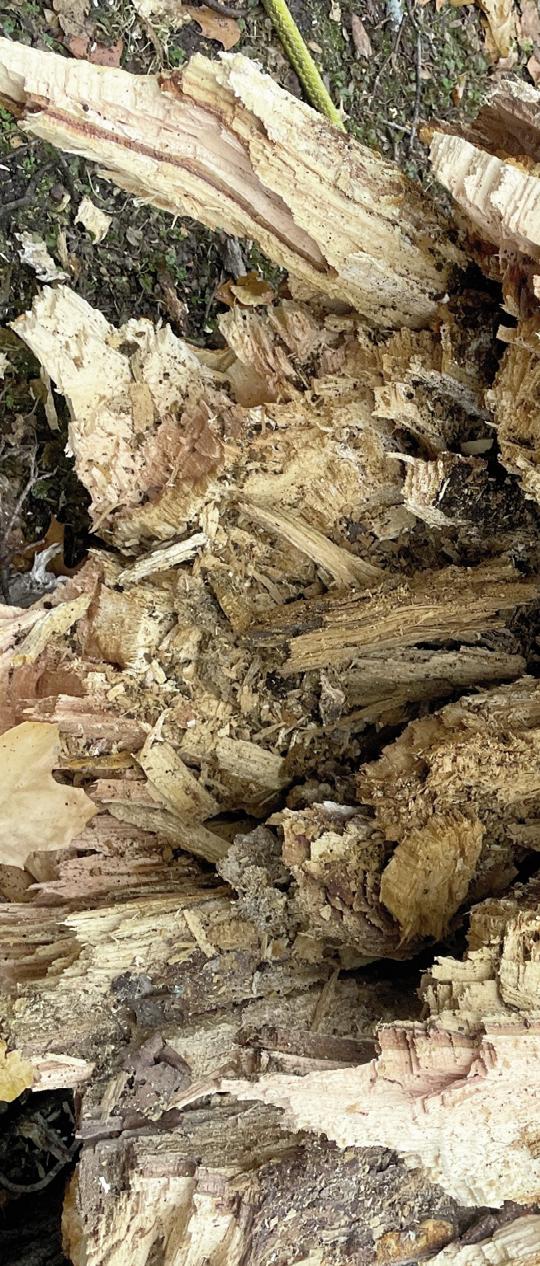

How much decay is too much? Photo at left is a 225-year-old Sugar Maple that leaned over a house and was removed due to extensive decay from large old pruning wounds. Photo at right is a Bur Oak that is still standing. It suffered damage from road construction decades ago and as a result has such a small crown it does not currently pose a threat.
You are probably thinking: “What makes Minnesota trees different from similar species in other parts of the world? And, if there are successful mature tree management strategies that work elsewhere why not use them here?”
Well firstly, Minnesota, and especially the Twin Cities region, is actually quite a diverse area; where prairie meets the Big Woods, and several rivers join to make the Mississippi mighty. As the climate shifts and urbanization continues to fragment landscapes, forests and trees will become increasingly stressed and isolated. Local growing conditions will dictate insect and disease pressures that may not be documented elsewhere. Secondly, mature tree
(Continued on Page 9)
www.MTGF.org SPRING | SUMMER 2024 ~ MTGF CLIPPINGS 7

OUTDOORS
October 8, 2024
Northern Green is going outdoors on Oct. 8 at Aldrich Arena + Grounds in Maplewood. This event includes an outdoor trade show and interactive, hands-on education for your Northern Green Village!
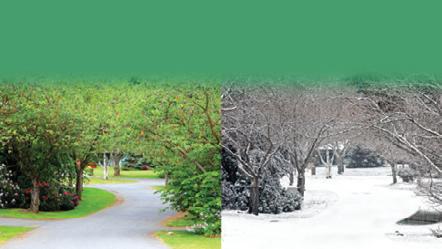







LOCATION: Aldrich Arena + Grounds, Maplewood SAVE THE DATES: Jan. 21-23, 2025
Expanding the impact of Northern Green with an additional annual event OUTDOORS!
The addition of an outdoor component to the Northern Green umbrella allows for more demonstrations, handson education and installations, and interactive experiences at the one-day event on October 8, 2024. Plus, suppliers will be able to feature outdoor equipment in its natural environment – test drive a mower, take a spin in that miniexcavator, or purchase a plow for the upcoming snow season. Featuring a large outdoor exhibit area and indoor exhibits, too. Lunch is included, and a happy hour event will close the day.

LOCATION: Saint Paul RiverCentre
Turf, Grounds, & Snow Management Professional Gardening Services Garden Center/Grower Tree Care/Arborist Landscape/Hardscape Contractor Landscape Design/ Landscape Architecture Golf Water/Irrigation
Minnesota’s Tree Heritage-
(Continued from Page 7)
Secondly, mature tree management strategies from other regions may be effective, but we need to know which ones and how to apply them for each species. Some tree management techniques focus on structural issues while others focus on plant vigor. These can be conflicting. As time moves on and we have fewer and fewer mature trees in the urban forest, we will have even fewer trees to play “trial and error” with. Thus, we need to find effective management methods soon, because we can’t afford to fail.
How do we get more trees to maturity?
Firstly, replanting with robust species is essential. Then, these trees need to be well maintained to get them set up for a long, productive life. This includes soil care, regular watering, formative pruning, and insect/disease mitigation. This may seem obvious, but cutting corners at this stage makes future management more difficult and less effective, undermining all of the expense and effort. An example of this can be seen almost everywhere you look along city streets. Most of these trees are irregularly pruned which results in poor form and large pruning wounds that lead to decay and eventually premature removal. Even with good pruning it doesn’t mean much if the soil is heavily compacted, and rainwater is funneled
away. Moisture stress is a great way to let aggressive insects get a foothold in otherwise healthy trees that can normally defend themselves.
“Ok, so how do we know if a mature tree management strategy is effective?”
Great question! To pass the test the tree would need to still be alive and structurally sound enough to be retained. This will be a balance of strategies that do the least harm with the greatest effectiveness for the species in question. The strategies that pass our scientific inquiry would then be trialed in the landscape and reassessed. At this scale the program's effectiveness could be broadly assessed via satellite imagery and noticed in municipal stormwater budgets. The more mature trees, the more green and the lower the stormwater costs.
The ConsArbMN program plans to publish its findings in formal reports every five years or sooner if significant discoveries are made. We also plan to continually add trees and study new management practices and publish this data on a similar cycle with the end goal being the development of a database of individual tree species profiles and protocols for managers to use. Besides reference material for managers, we plan to host workshops and educational events to further these mature tree management practices.
The clock is ticking, and we need to establish protocols and standards soon. Good trees are being removed unnecessarily every day.

21!)(#$1%2'5,33+55555555-*440. 40 //4&4" 4

/,412+-KKKKK@7*(2>7KKKKK4>>,*4>0IFBEK+BI8=I?GGK@JJEK@B66AHJI F8K9HCCJGFD?
3*23541(#5%41045+/22-"0') <JJK1?5CK@JJEK9H.DBIJKKKK @FEK/B?AHD3K 3JAAF5KD?=!K'JCDB;$3K<ABJ=I?GGK<AJCE )?DH"JK%I?GGK K&HAE8AF5JIK@JJEKKKK 7IFGHFCK>FCDIFAK0IFEB;DGKKK :JIDHAH JI >IJJ6HC=K<JCD=I?GGK@JJEKKKK :HCJK:JG;BJK@JJEKKKK >BGDF#K@JJEK9H.HC=
Paul Kubista pkubista@twincityseed.com
Andy Keating akeating@twincityseed.com
James Wolfin jwolfin@twincityseed.com
www.MTGF.org SPRING | SUMMER 2024 ~ MTGF CLIPPINGS 9
823= 1 7'=29 %% %"5%410 45+ /22-"0' ) >C; >A A ?<@C 6 B@@ CAC BB?: 3,!.$,&4/53 *,&4/53#5%41045+/22-"0') 1-+.$23541(
2024 MTGF FUNDING - $19,000 Teaching, Research and Outreach Programs at University of Minnesota
Principal Investigators:
Ryan Murphy Department of Forest Resources – University of Minnesota, St. Paul &
Benjamin Held and Robert Blanchette Department of Plant Pathology - University of Minnesota, St. Paul
Cooperators: Minnesota Turf and Grounds Foundation and Minnesota Urban Foresters and Arborists
Abstract
Urban and forested areas are invaluable resources that bring many benefits to Minnesota communities. However, tree canopy cover is dwindling due to invasive threats like Dutch elm disease and emerald ash borer as well as environmental stressors like successive years of drought, burdening the resources for forest management in the landscape. Sustained efforts are crucial to restore and preserve canopy to provide a sustainable future urban forest for both residents and land managers. We aim to accomplish these tasks by researching tree diseases and pests, assessing tree species performance, providing meaningful professional continuing education, and conducting outreach with youth to help recruit the next generation of urban foresters, arborists, and scientists. The long term support of MTGF to the Departments of Forest Resources and Plant Pathology has created many opportunities for growth in the areas of academic research and outreach to industry professionals, school-age youth, and others. We are requesting funds to accomplish this work through continued general support of the Urban Forestry Outreach & Research Lab as well as the University of Minnesota Elm Selection Program.
Rationale, Benefits to Grounds Managers:
Continued development of high-quality instruction, research, and outreach programs to grounds managers, arborists, and school-age youth increases the value and investment in urban and community forests statewide. Additionally, research and workshop programming provided by University of Minnesota faculty and staff throughout Minnesota help to engage our communities and enhance the benefits of urban natural resources.
Objectives:
1. UMN Urban Forestry Outreach & Research Programs (UFOR)
2. University of Minnesota Elm Selection Program (UMESP)
1. UMN Urban Forestry Outreach & Research Programs
2024 UFOR Objectives:
● Continue the support of youth outreach, engagement, and recruitment programs in the metro as well as the exploration of programs that reach K-12 kids in greater
Minnesota. This includes development of skills and knowledge related to urban forestry and arboriculture, technical tree climbing, and methods of rope access used to safely enter and explore tree canopies.
● Continue long term data collection and creation of tree maintenance profiles for important mature shade tree species in Minnesota via the Conservation Arboriculture Research Program (ConsArbMN).
2024 Anticipated Outcomes:
● Youth Tree Climbing Events on and off UMN St. Paul Campus (4-7 events) which will provide professional rope access arboriculture experiences to over 100 youth
● All trees currently under long term observation for the Conservation Arboriculture MN Research Program will be visited and documented, continuing this 10 year long term research project.
Materials & Methods:
Youth Engagement in Arboriculture (YEA): The Minnesota Turf and Grounds Foundation has been critical to the sustainability of the YEA program. Funding from MTGF supports hiring contracted professional arborists and UMN technical staff to provide hands-on instruction in professional arboriculture techniques in a safe and fun environment to youth and young professionals entering the green industry. MTGF Funding is also an important part of maintaining a collection of safe tree climbing equipment; including ropes, helmets, harnesses, rigging equipment, and other essential personal protection equipment and first aid. In 2024, YEA will once again be collaborating with the University of Minnesota’s Youth Programs to provide a week-long climbing experience for participants. Additional climbing events will be conducted at various municipal Arbor Day events, the MN Festival of Trees / Tree Climbing Championships, and with other developing partner groups such as the Girl Scouts.
2023 YEA Climbing Events
● Eden Prairie Arbor Day - 25 participants
● Festival of Trees / MN Tree Climbing Championships in Buffalo, MN - 85 participants
(Continued on Page 13)
www.MTGF.org 10 MTGF CLIPPINGS ~ SPRING | SUMMER 2024


Products O昀ered:
• 100% Compost and Compost Blends
• Natural and Colored Mulch
• Athletic Field and Golf Course
Top Dressing Blends
OWNED
OPERATED BY THE
MDEWAKANTON
AND
SHAKOPEE
SIOUX COMMUNITY
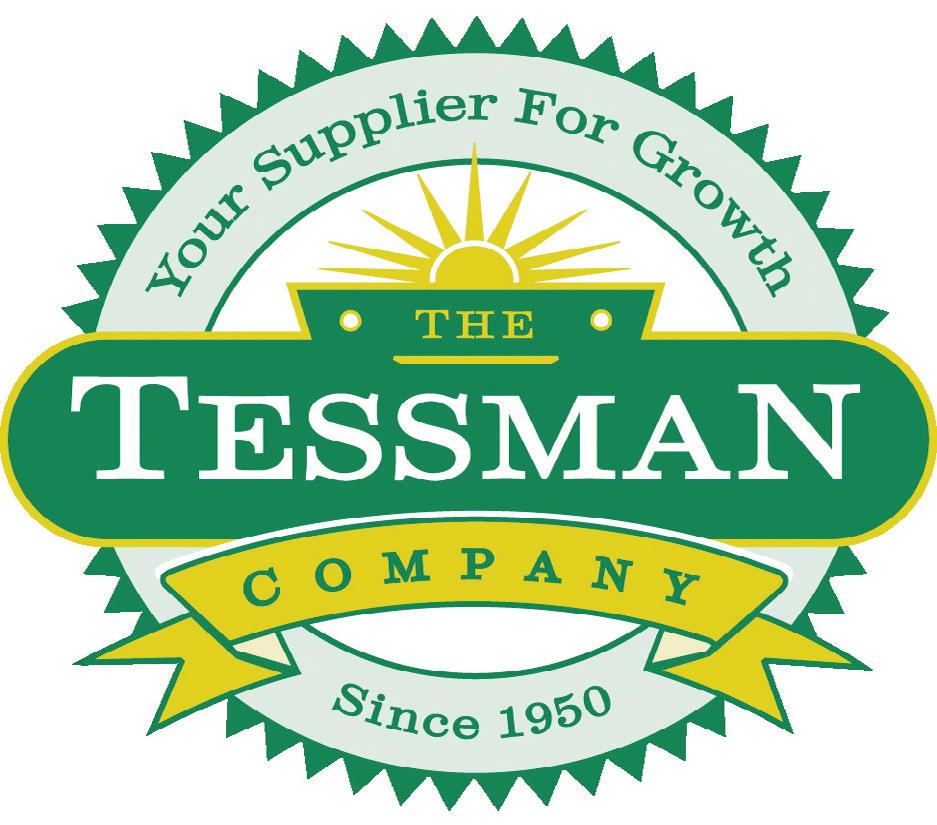

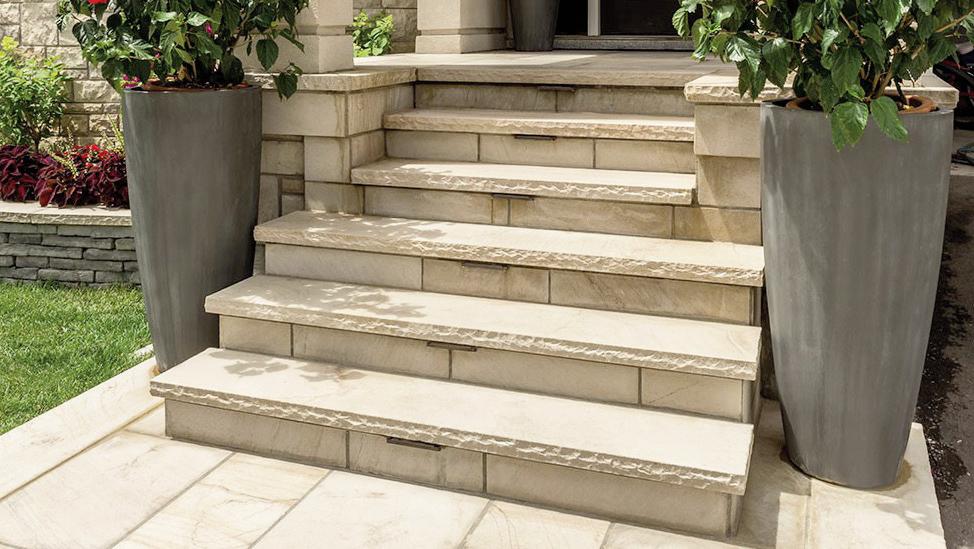
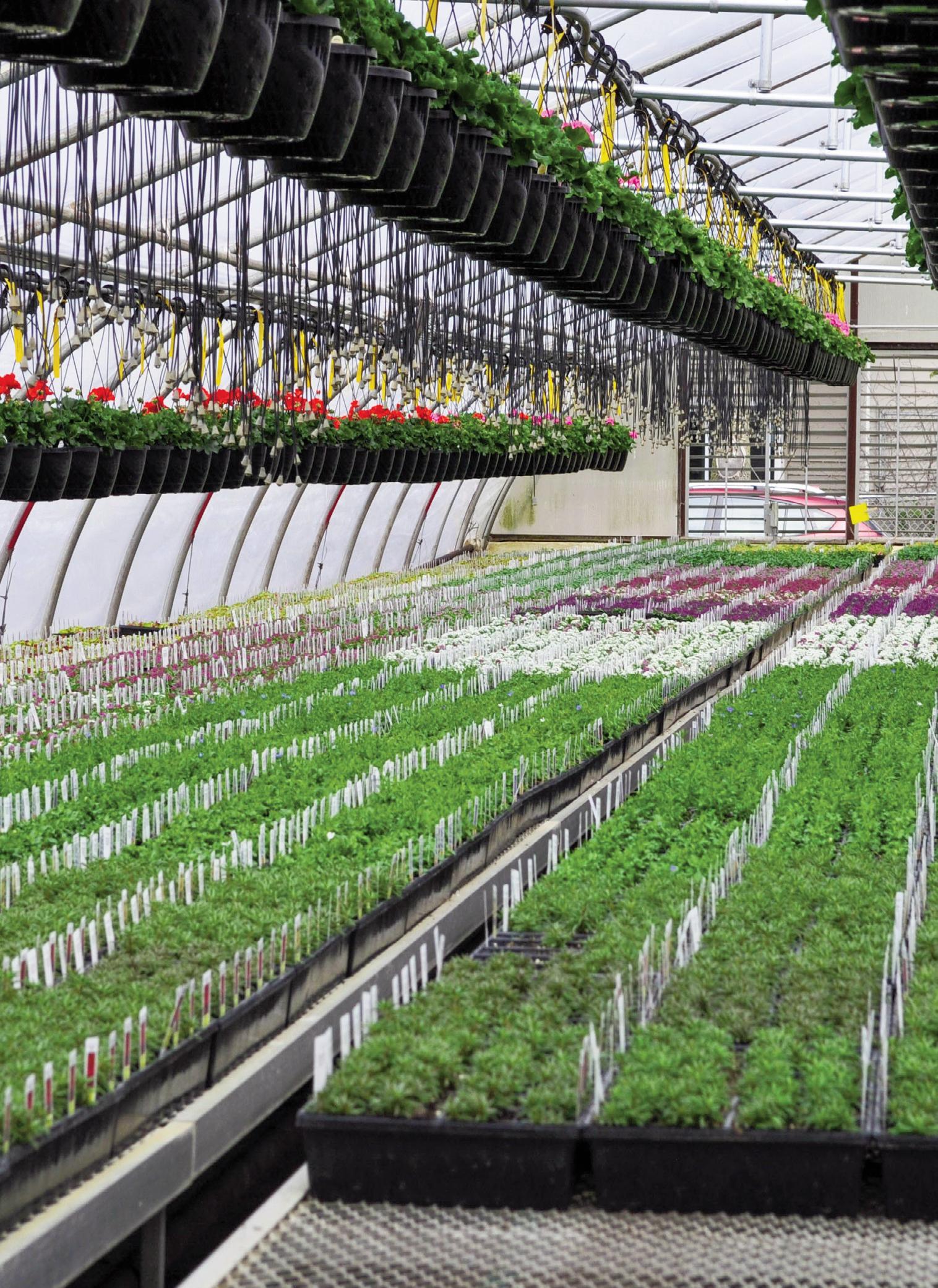
St. Paul, MN Fargo, ND Tea, SD Tea, SD (605) 368-2586 Fargo, ND (701) 232-7238 St. Paul (651) 487-3850 Landscape • Greenhouse • Lawn Care • Turf • Winter Equipment
2024 MTGF Funding-
(Continued from Page 10)
● Increasing Diversity in Environmental Careers Program at the Conservation Corps of Minnesota and Iowa - 12 Participants
2023 YEA Additional Education Outreach:
● Provided classroom instruction to Hmong College Prep Academy students about Urban Forestry - 40 students
● UMN staff participated in the development of a youth coloring book focusing on trees in North Minneapolis in partnership with MNDNR and Project Sweetie Pie and provided printed copies for a Juneteenth celebration. - Over 3000 copies printed so far.
Conservation Arboriculture MN Research Program (ConsArbMN):
ConsArbMN aims to assist tree managers by developing a science based local standard of care and tree species profiles which will increase the knowledge necessary for arborists and tree managers to be both comfortable and successful retaining large trees into perpetuity.
The Conservation Arboriculture MN Research Program led by the UFOR lab at the Department of Forest Resources of the University of Minnesota - Twin Cities campus is working on developing Minnesota species specific mature tree management protocols. Through a multifaceted 10-year study, which began in 2019, the 13 most common large shade trees in the Twin Cities area are being intimately studied to decipher appropriate mature tree management practices. The initial work was funded by the MTGF and several municipal partners.
Management techniques such as crown reduction, decay diagnostics, structural support systems, crown modeling, and advanced pathology such as DNA extraction of insect larvae and decay fungi are being documented and explored on over 37 trees across multiple sites as well as stand level management for 3 wood lots. This first group of species will be used to develop the protocols for management techniques for other species.
Due to the difficulty in finding mature tree replicates, multiple case studies will be used to document and track management techniques over time. Trees in the initial cohort were selected and inspected in 2019 and 2020. This included photography, aerial crown inspection, advanced decay diagnostics, and in some cases LiDAR imagery. Based on these findings management plans with recommendations were generated, performed, and documented. In most cases this included regular maintenance pruning of hazardous deadwood along with crown reductions and, in some cases, the installation of structural support systems. All trees are monitored and photo documented several times per year.
All live wood pruning cuts are measured and documented to determine ideal reduction cut sizes by species and condition as well as resulting decay and sprout responses
over time. These will be assessed through regular photo monitoring, decay diagnostic tools, destructive sampling, and in some cases LiDAR.
Destructive sampling of pruning wounds and trees or tree parts that fail will be documented. In some cases this could include advanced pathology in the event of nonstructural failure related mortality or dieback. This work will be accomplished in partnership with the UMN Department of Plant Pathology who have expertise in isolating decay fungi. Areas that received advanced decay diagnostic procedures will be assessed to determine the presence and extent of collateral damage. The destructive sampling will be used to truth the decay diagnostic results and generate a resource for practitioners to compare their data to. This would include wood resistance values for resistance drills and sound wave travel times for tomography. Destructive sampling methods could include peeling of bark or thinly slicing the structural members on a bandsaw mill. For example, one destructive sampling assessed included unions of bur oak to determine if they were sealed over or not based on bark characteristics. Generally, samples are saved and prepared to be educational materials at future workshops.
A crown modeling spreadsheet, currently called the “Branch Calculator”, is being developed using data from these studies as well as the destructive samples. This spreadsheet can be used by practitioners to model a tree or individual branch over time. It calculates the branch weight, length, and diameter increases after a specified growth cycle, as well as the impact of reduction pruning and decay. The calculator uses branch angles and can estimate how strong a structural support system would need to be to support it. Values are based on species specific growth factors and truthed by actual measured forces. Additional information such as brush and wood volume is calculated.
Data will be presented in several formats including written reports and guides, videos, and workshops. The “Branch Calculator” will be made available on the UFOR website.
2. University of Minnesota Elm Selection Program (UMESP)
Objectives:
1) Continue to identify putatively resistant elms in the Minnesota landscape, clonally propagate, and screen for DED resistance.
2) Study mechanisms of resistance in resistant trees.
3) Maintain elm research plots for long term resistance screening and for non-native resistant species.
Materials & Methods:
Our database of survivor elms across the state continues to grow as community engagement has steadily increased. Trees identified in this database are a source of potential scion material for clonal propagation DED screening
(Continued on Page 14)
www.MTGF.org SPRING | SUMMER 2024 ~ MTGF CLIPPINGS 13
2024 MTGF Funding-
(Continued from Page 11)
purposes. Collections and propagation will continue using traditional methods and developing enhanced propagation techniques. We also currently have a large collection of elms (over 100 selections) that were propagated from survivor elms in areas of heavy disease pressure from across the state and will continue to propagate them to numbers suitable for trials. Inoculations are conducted by injecting a known concentration of spores of a lab grown culture of the pathogen Ophiostoma novo-ulmi into the test tree via a small drill wound in the main stem. Ratings take place beginning four weeks post inoculation using a 11 point scale where 0=no wilt and 11=complete wilt and continue into the next growing season.
2024 Anticipated Outcomes:
This project continues to yield successful results providing new information about Minnesota elms, their resistance to Dutch elm disease, and propagation echniques. In the coming growing season, we will continue to evaluate inoculations of elm from a commercially available DED resistant elm. This consists of three commercially available DED resistant elms (Valley Forge, Jefferson, and Prairie Expedition) of which one set (10) was inoculated in 2020 to determine comparative resistance and to test inoculum dosage and a second set inoculated in the spring of 2022 testing age effects. Results show that varieties exhibited strong resistance. A manuscript is being drafted with this data in addition to other details of our program. Monitoring will continue as some trees still continue to have wilt symptoms.
Evaluations of a large replicated inoculation trial initiated in spring of 2022 will also continue in 2024. This consisted of 15 new selections with 7 selections having six or more reps.
Ratings from last growing season show 13 selections with a rating of 3 or lower (0=no wilt and 11=complete wilt). Many of the selections in this trial are also duplicated in a second block that will be inoculated in 2025. Propagations from new selections in addition to those showing putative resistance will continue in 2024. Selections that have survived previous inoculations will be propagated for a future study with additional replicates. These selections exhibited symptoms but were able to effectively wall off the pathogen and survive one year from inoculation. Studies and refinement of propagation methods will also continue through the spring and summer of 2024.
Although obtaining DED resistant American elm is the main focus of our work, there are also selections of nonnative elms that have shown to be highly resistant to DED. We have a number of these selections in our collection which could be useful in select landscape applications, not only because of DED resistance, but also functional form as well. Support from MTGF allows research into the use of non-native elm species in MN. In addition to our campus nursery in St. Paul, we also have an elm plot located at the MN Landscape Arboretum.
This plot provides a location to trial these non-native elm varieties, and we plan to continue maintaining and planting this plot with a diverse set of elms. We will focus on continuing selection of Ulmus parvifolia genotypes at the Minnesota Landscape Arboretum and propagating Ulmus ‘Rebella’ for trials in the Minnesota landscape.

www.MTGF.org
14 MTGF CLIPPINGS ~ SPRING | SUMMER 2024 Turf and Grounds Field Day Set for June 26 at TROE Center Go to www.mpsfma.org to register!
2024 MTGF FUNDING - $6,000
The Effects of Cultivation Practices and Topdressing Use on the Mitigation of Greenhouse Gas Emissions from Creeping Bentgrass Putting Greens
Co-Principal Investigators:
Kristina S. Walker, Ph.D.
Associate Professor of Agronomy
Agriculture & Natural Resources Department University of Minnesota Crookston &
Katy E. Chapman, Ph.D.
Associate Professor of Biology
Math, Science, and Technology Department University of Minnesota Crookston
Abstract:
Previously, a two-year athletic field study on Kentucky bluegrass (Poa pratensis L.) evaluating cultivation practices (hollow-tine aerification, verticutting, and control) and fertilizer use (220 kg N ha-1 yr-1 using urea and 0 kg N ha-1 yr-1) on greenhouse gases was conducted by Walker and Chapman (2024). Results from this field project showed the presence of urea and hollow-tine aerification resulted in the highest soil carbon dioxide (CO2) emissions. No significant differences between soil methane (CH4) flux were observed based on fertilizer; however, the verticutting cultivation treatment fluxed significantly more soil CH4 than did the uncultivated control. Results showed no significant differences in soil nitrous oxide (N2O) flux based on fertilizer or cultivation practice in year one; however, in year two both fertilizer and cultivation practice showed significant differences between treatments with the urea and the hollow-tine treatments fluxing significantly more soil N2O (urea 13%, hollow-tine 17%). It is unknown whether these same trends with greenhouse gas fluxes would be observed in a golf course setting on Creeping bentgrass (Agrostis stolonifera L.). In addition, what effect does topdressing have on greenhouse gas emissions. Little to no research has been conducted in this area of turfgrass management. Therefore, the purpose of this proposed study is to evaluate the effect of an application of topdressing following cultivation practices on greenhouse gas emissions from putting greens. The goal is to provide turfgrass managers with best management practices to maintain high quality turf more efficiently and sustainably when implementing cultural practices.
Rationale for Research:
Sports fields and putting greens are extremely difficult to manage due to concentrated traffic on a regular basis. The intensity of use leads to thinning of the turf canopy decreasing turfgrass quality and increased soil compaction (Puhalla, J., Krans, J., & Goatley, M., 2010).
Root function decreases under compaction due to the lack of oxygen needed for respiration and buildup of toxic
gases such as CO2 and CH4 which impact climate change. Cultivation techniques are used to loosen the soil and reduce compaction, to reduce thatch, or to groom the surface.
These techniques range in plant benefits and the level of surface disturbance where the most beneficial for soil management are most disruptive to the playing surface. Cultivation techniques in turf include aerification, verticutting, spiking, slicing, and water/air injection. The most commonly used cultivation techniques by turfgrass managers are aerification (hollow-tine) and verticutting. Hollow-tine aerification is where hollow tines are inserted into the soil and soil cores or plugs are removed leaving a hole or cavity in the turf canopy and soil. Aerification relieves soil compaction and increases water, fertilizer, and oxygen penetration to plant roots (McCarty, 2011).
Verticutting or vertical mowing is the slicing of the turfgrass canopy with a series of vertically mounted blades rotating on a shaft. The shaft can be raised or lowered to vary the depth (cut shallowly or more deeply) into the turf canopy. Verticutting is implemented when the thatch layer exceeds 0.25 to 0.5 in (McCarty, 2011). When verticutting is used to control thatch, the depth of the blades are typically adjusted to reach the bottom of the thatch layer. For cool-season turfgrass species, aerification is recommended twice per year, once in May and once in September (Puhalla, J., Krans, J., & Goatley, M., 2010). Verticutting is recommended at a minimum in the spring and early fall McCarty, 2011) however, many turfgrass managers use it more frequently (several times a year) if the thatch layer exceeds 0.25 - 0.5 in.
Following cultivation, topdressing (the application of a thin layer of soil, sand, or other finely granulated materials over the turf surface) is typically applied to the turf to fill the holes left by aerification (one to three times a year of 5 to 25 ft3/1000 ft2 or more of topdressing sand)
(Continued on Page 17)
SPRING | SUMMER 2024 ~ MTGF CLIPPINGS 15 www.MTGF.org
CUSTOM BLENDED MIXES
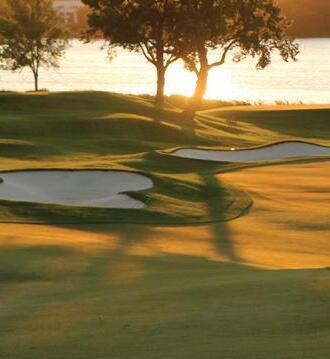
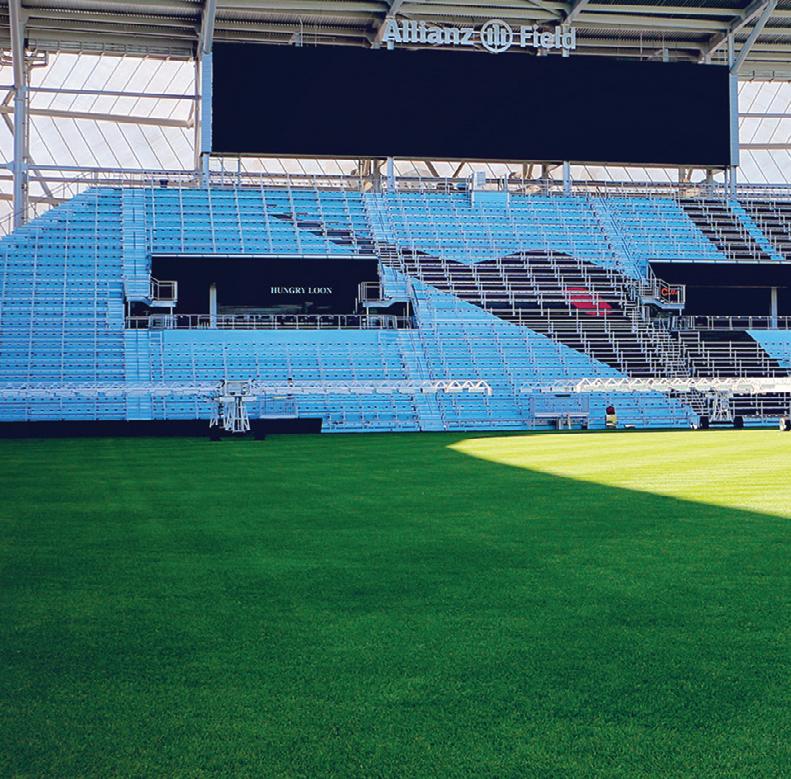
CONSISTENT QUALITY
We custom blend mixes using a computerized Accublender™, controlling quality & consistency.
RESPONSIVE DELIVERY
Experienced drivers operate a fleet of more than 45 trucks. Our GPS locator helps us set the standard for the most responsive delivery in the 5-state area.
MINNESOTA FAMILY BUSINESS
Our mining reserve supplies the finest quality products in the region including: golf, athletic soils, top dressing, engineered soils, MNDOT & MPCA mixes, iron aggregate mixes, rain garden and rooftop garden mixes. We precisely engineer soils using our computerized Accublender™ to provide you with consistent quality everytime.

SATISFIED CUSTOMERS
• Braemar Golf Course
• Olympic Hills Golf Club
• Hazeltine National Golf Club
• Allianz Field
• MN Vikings
• Downtown East Park
• Bachman’s
• Bailey’s
763.441.1100 • plaistedcompanies.com info@plaistedcompanies.com WE ARE SOIL EXPERTS
GOLF
SPORTS TURF HORTICULTURE
2024 MTGF Funding-
(Continued from Page 15)
or to smooth and fill in damaged areas on the turf surface following verticutting (every 7 to 14 days of 0.5 to 2.0 ft3 /1000 ft2 of topdressing sand). The primary benefit of topdressing is a reduction in the thatch layer by decreasing thatch decomposition (Christians et al., 2016). In sports management, topdressing firms the thatch layer, providing a better surface for player performance and player safety. Other benefits of topdressing include modifying the existing soil in the rootzone, enhancing overseeding by cover and stabilizing newly planted seed or plant materials, encouraging a denser and fine-textured turf, enhancing turf recovery from injury, reducing graininess, and truing and smoothing the playing surface. It is known that cultural management practices can offset sequestration by mitigating greenhouse gas emissions directly and indirectly (Bartlett & James, 2011). Fertilization (Braun et al., 2023; Chapman & Walker, 2023), irrigation (Braun & Bremer, 2018), clipping management (Law et al., 2021), and other turfgrass management practices have the potential to contribute to emissions and sequestration of greenhouse gases, leading to uncertainties in the net contribution of turfgrass ecosystems to climate change (Zhang et al., 2013). Of the other turfgrass management practices previously mentioned, the influence of various cultivation practices (aerification and verticutting) and topdressing applications on greenhouse gas fluxes are unknown (Braun et al., 2023). Walker and Chapman (2024) found that hollow-tine aerification resulted in the highest soil carbon dioxide (CO2) and soil nitrous oxide (N2O) emissions.
Topdressing materials or rates were not included in this study. Little to no research has been done to determine the effects topdressing has on greenhouse gas fluxes. Therefore, the influence of various cultivation practices and topdressing applications need to be evaluated to determine the impact they have in contributing to greenhouse gas emissions (CO₂, CH₄, N₂O). A two-year field study on a creeping bentgrass (Agrostis stolonifera L.) putting green is proposed to evaluate cultivation practices (hollow-tine aerification, verticutting, and an non-cultivated control) and topdressing use [light (0.5 ft3/1000 ft2) application, heavy (10 ft3/1000 ft2), and an non-topdressed control] on greenhouse gas emissions.
Potential Benefits of Research to Turf and Grounds Professionals:
Turfgrass managers within the green industry are known for being environmental stewards (GCSAA, 2024) and are asking for turfgrass management strategies to mitigate the effects of climate change due to increased greenhouse gas concentrations (Townsend-Small & Czimczik, 2010). The goal of this proposed research project is to provide turfgrass managers with best management practices relating to cultivation practices and topdressing rates to maintain turfgrass systems more efficiently and sustainably. Specifically, to determine how cultivation techniques and topdressing applications influence greenhouse gas
emissions.
Objectives:
(1) Evaluate the impact cultivation practices and topdressing rates have on greenhouse gas emissions.
(2) Determine the effect cultivation and topdressing rates have on overall turfgrass health by collecting turfgrass quality and turfgrass color data.
(3) Provide turfgrass managers with cultivation and topdressing management strategies that reduce greenhouse gas emissions.
Materials and Methods:
This proposed two-year field study will be conducted at Lincoln Golf Course in Grand Forks, ND, USA on a 80% creeping bentgrass (Agrostis stolonifera L.) and 20% annual bluegrass (Poa annua L.) practice putting green consisting of a sand-based root zone (80:20 sand:organic matter). The research area will be set up as a split plot design with three cultivation regimes and three topdressing treatments. Both cultivation and topdressing treatments will be replicated four times. Greenhouse gas data and turfgrass data will be analyzed via analysis of variance (ANOVA) utilizing the split plot design procedures in SAS (Clark & SAS Institute, 2004). Cultivation will be modeled as the whole plot and topdressing will be modeled as the subplot.
Cultivation regimes will include hollow-tine aerification, verticutting, and an noncultivated control. The golf course equipment (aerifier and verticutter) will be used to cultivate the putting green. Tine diameter, tine spacing, and tine depth for aerification will be assessed on site. The verticutter will be set on the lowest setting, approximately 2 in deep to cut into the soil (blade spacing to be determined on-site). Soil cores and debris will be removed from the plots following cultivation. Aerification and verticutting will occur in May and October each year.
Topdressing (sand, according to USGA specifications) will be immediately applied following cultivation events using three topdressing application rates: light (0.5 ft3/1000 ft2), heavy (10 ft3/1000 ft2), and a non-topdressed control (0 ft3/1000 ft2). Topdressing sand will be brushed and watered into the turfgrass canopy. Cultivation and topdressing treatments will be implemented prior to field measurements being taken.
Gas samples will be taken weekly during the growing season following the protocols of the United States Department of Agriculture-Agriculture Research Service Greenhouse Gas Reduction through Agricultural Carbon Enhancement Network (GRACEnet Sampling Protocols USDA ARS, n.d.; Mosier, 2001). A polyvinyl chloride pipe (6 in x 5 in height) will be tamped into the ground until it is flushed with the soil surface following cultivation. The bases will remain in the soil until cultivation treatments are re-applied and then immediately replaced. Gas samples will be taken by tamping a vented close gas chamber covered in reflective tape (no light penetration) over the base in the ground for the sampling period.
(Continued on Page 18)
www.MTGF.org SPRING | SUMMER 2024 ~ MTGF CLIPPINGS 17
2024 MTGF Funding-
(Continued from Page 17)
Gas samples will be taken at chamber closure; and 20and 40-minutes post chamber closure. The samples will be placed into gas tight vials using a 10 mL syringe. The greenhouse gas samples will be analyzed using a gas chromatograph to determine the concentration of CO2, CH4, and N2O in each sample. The gas chromatograph used will be a Varian 350 equipped with a thermal conductivity detector for CH4, an electron capture detector for N2O, and a flame ionization detector for CO2.
Concentrations will be determined by interpolation using gas standards obtained from Scott Specialty Gases (Air Liquide). Standard curves will be used if they have an r2 value of 0.99 or greater. The concentrations of the samples collected are then used to determine a change in concentration (flux rate) during the 40-minute sampling period using linear regression.
Turfgrass appearance will be evaluated by quantifying canopy greenness and using visual turfgrass quality ratings. Turfgrass greenness will be determined using a chlorophyll meter that measured the normalized difference vegetation index (NDVI) of the turfgrass stand (FieldScout CM 1000 NDVI from Spectrum Technologies, Inc.). Three measurements will be taken from approximately 90 cm above the turfgrass canopy using a diagonal grid pattern which measured the back, center, and front of each plot. The three measurements will be averaged to produce a single plot rating and are reported as NDVI (-1 to 1).
Turfgrass quality will be visually rated (per plot) weekly throughout the growing season using a 1 to 9 scale, where 1 = completely brown dead turf, 6 = minimally acceptable turf, and 9 = optimum uniformity, density, and greenness (Morris & Shearman, 1998). Temperature (soil and air) and soil moisture will be recorded weekly synchronously with greenhouse gas collection during the growing season using a HM digital TM-1 industrial grade digital thermometer and a Dynamax TH300 TDR soil moisture probe which takes the average soil moisture in the top 60 mm of soil. Weather data will be collected from the Grand Forks International Airport.
Anticipated Outcomes/Results:
Based on previous research (Walker and Chapman, 2024), it is expected that greenhouse gas emissions will be higher for the hollow-tine cultivation treatment. This is concerning to turfgrass researchers and turfgrass anagers as hollow-tine aerification is the most beneficial cultivation management practice in improving overall soil health and plant health. Verticutting was found to decrease reenhouse gas emissions although it is not the most beneficial cultivation practice for reducing soil compaction. It is expected that the application of topdressing following hollow-tine aerification will decrease greenhouse gas fluxes. However, this has never been previously researched. Therefore, the purpose of this project is to determine whether the addition of topdressing following cultivation decreases greenhouse gas emissions.
Deliverables:
Annual written reports on the progress of the project, a final report including all the data and analysis, one paper submitted on the international and national level to peerreviewed scientific journals, and multiple presentations at state, regional, and national conferences.
References:
Bartlett, M. D., & James, I. T. (2011). A model of greenhouse gas emissions from the management of turf on two golf courses. Science of The Total Environment, 409(8), 1357–1367. https://doi.org/10.1016/j.scitotenv.2010.12.041
Braun, R. C., & Bremer, D. J. (2018). Nitrous Oxide Emissions from Turfgrass Receiving Different Irrigation Amounts and Nitrogen Fertilizer Forms. Crop Science, 58(4), 1762–1775. https://doi.org/10.2135/cropsci2017.11.0688
Braun, R. C., Straw, C. M., Soldat, D. J., Bekken, M. A. H., Patton, A. J., Lonsdorf, E. V., & Horgan, B. P. (2023). Strategies for reducing inputs and emissions in turfgrass systems. Crop, Forage & Turfgrass Management, 9(1), e20218. https://doi.org/10.1002/cft2.20218
Chapman, K. E., & Walker, K. S. (2023). The Effects of Fertilizer Sources and Site Location on Greenhouse Gas Emissions from Creeping Bentgrass Putting Greens and Kentucky Bluegrass Roughs. Grasses, 2(2), Article 2. https://doi.org/10.3390/grasses2020008
Christians, N. E., Patton, A.J., & Law, Q. D. (2016). Fundamentals of turfgrass management. John Wiley & Sons. GCSAA. (2024, March 27). Environment Hub & Resources: Golf Course Sustainability. https://www.gcsaa.org/environment/environment-hub
Law, Q. D., Trappe, J. M., Braun, R. C., & Patton, A. J. (2021). Greenhouse gas fluxes from turfgrass systems: Species, growth rate, clipping management, and environmental effects. Journal of Environmental Quality, 50(3), 547–557. https://doi.org/10.1002/jeq2.20222
McCarty, L. B. (2011). Best golf course management practices. (3rd ed.). Prentice Hall.
Puhalla, J., Krans, J., & Goatley, M. (2010). Sports fields: Design, Construction and Maintenance. John Wiley & Sons.
Morris, K. N., & Shearman, R. C. (1998). NTEP turfgrass evaluation guidelines. NTEP Turfgrass Evaluation Workshop, Beltsville, MD, 1–5. Townsend-Small, A., & Czimczik, C. I. (2010). Carbon sequestration and greenhouse gas emissions in urban turf. Geophysical Research Letters, 37(2). https://doi.org/10.1029/2009GL041675
USDA ARS. (2022, October 12). GRACEnet Sampling Protocols. https://www.ars.usda.gov/naturalresources-andsustainable-agricultural-systems/soil-and-air/docs/gracenetsampling-protocols/Walker, K.S. & K.E. Chapman. 2024. The effects of cultivation practices and fertilizer use on the mitigation of greenhouse gas emissions from Kentucky bluegrass athletic fields. Submitted to Journal of Environmental Quality November 29, 2003; revision requested and sent April 2, 2024.
Zhang, Y., Qian, Y., Bremer, D. J., & Kaye, J. P. (2013). Simulation of Nitrous Oxide Emissions and Estimation of Global Warming Potential in Turfgrass Systems Using the DAYCENT Model.
Journal of Environmental Quality, 42(4), 1100–1108. https://doi.org/10.2134/jeq2012.048
18 MTGF CLIPPINGS ~ SPRING | SUMMER 2024 www.MTGF.org


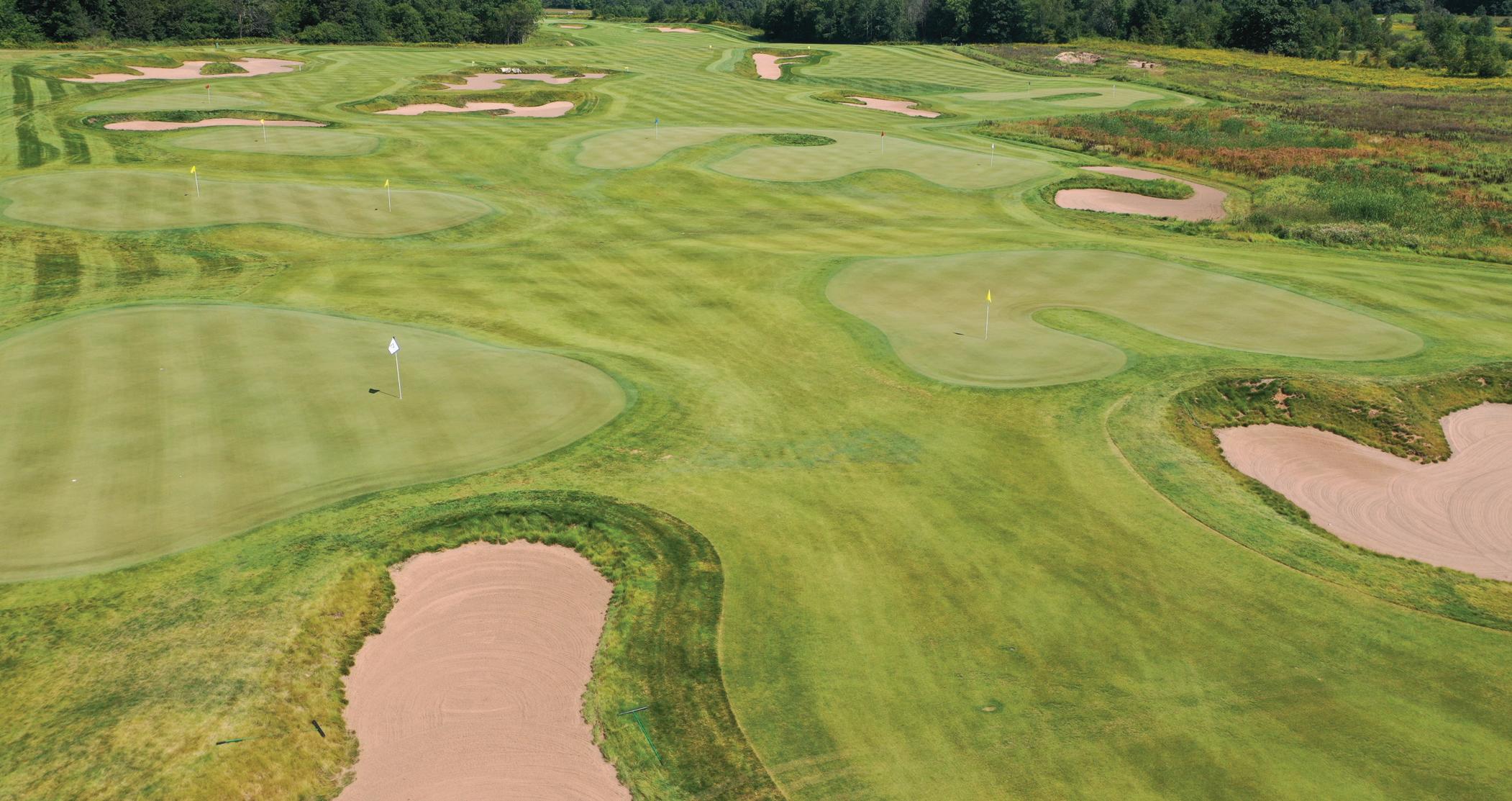



It starts with the seed! MANAGED TURF SOLUTIONS ramyturf.com • 800-658-RAMY Seed – Fertility – Chemistry – Erosion
1932, the Ramy family has provided the upper Midwest with some of the highest quality seed materials available anywhere and we always will. We are here as a partner, not just a supplier, because we know it’s your success that will allow our success.
Since
MTGF FUNDING - $45,000 University of Minnesota Turfgrass Science Research Program Support
Principal Investigators
Dr. Eric Watkins & Jon Trappe,
Ph.D. University of Minnesota
Abstract
We are proud of the partnership between the University of Minnesota Turfgrass Science Program and the Minnesota Turf and Grounds Foundation. Since 2001 nearly $2 million dollars has been donated to the University of Minnesota from the MTGF. In return, we have conducted research to increase economic efficiency for turf managers and improve the ecological sustainability of turfgrass landscapes. This request includes $45,000 of general support to continue our research and outreach activities in the next year. MTGF funding is essential to maintain staff and land at the Turfgrass Research, Outreach and Education Center on the St. Paul campus. Ongoing projects are outlined below, and include improving turfgrass winter stress tolerance, conserving irrigation inputs, and implementing new technologies for data-based decision making.
Rationale for Research
Over the years we have leveraged support from MTGF to procure millions of dollars in support from other funding sources. The list of funding successes is extensive, ranging from the Minnesota Department of Transportation to the United States Department of Agriculture. Each funded proposal benefits the membership of the MTGF and amplifies the dollars invested. In recent years, we have leveraged MTGF funding to garner additional research grants, including:
● Metropolitan Council. $378,745. Reducing water use on Twin Cities lawns through assessment, research, and demonstration. This is a continuation of a long-term collaboration aiming to reduce water use on lawns in the Twin Cities. Funding from this grant supports outreach and education efforts, along with ongoing research that will improve our understanding of turfgrass species dynamics during periods of acute drought. We are now in discussion with the Met Council about a new project that would create a list of turfgrass seed mixtures for sustainable lawns and turf areas, with a focus on water conservation. This would allow professional turfgrass managers working for public entities to require the approved mixtures in any bid process, reducing the risk of low-quality seed mixtures being used for important projects. Minnesota residents would benefit by having easier access to the best turfgrass genetics.
Turfgrass seed sales companies would be able to move larger volumes on high quality turfgrass seed mixtures, reducing overhead costs and improving local seed sales. This idea came out of conversations with MTGF members
working with a local watershed in Dakota County.
● USDA Higher Education Challenge Grant: $150,000. Enhancing sustainability education through managed urban landscape curricula at higher education institutions in Minnesota. This project is evaluating higher educationcurriculum at institutions throughout Minnesota and is identifying opportunities for integrating sustainable turfgrass management into undergraduate courses. We are now developing educational modules that will serve as the basis for sustainability curricula—in the long term, we expect increased understanding of turfgrass systems to result in more well-informed citizens, along with heightened interest in turf and landscape management classes at institutions beyond the University of Minnesota, improving recruitment within the turfgrass industry. interest in turf and landscape management classes at institutions beyond the University of Minnesota, improving recruitment within the turfgrass industry.
● USDA Specialty Crop Research Initiative: $8,000,000. WinterTurf: A holistic approach to understanding the mechanisms and mitigating the effects of winter stress on turfgrasses in northern climates. This project, led by our team, involves researchers in 7 states and Norway, and aims to increase our understanding of winter stresses of turfgrass, while providing new solutions for turfgrass managers. This is the largest federal grant ever awarded to a turfgrass research project; our success in leading this project would not be possible without the years of support from MTGF and other allied organizations. We are building a database of winter injury reports that will prove invaluable both now and well into the future. This work is resonating with turfgrass managers worldwide.
● Minnesota Department of Transportation. $275,928. Regional optimization of roadside turfgrass seed mixtures phase 3: Assessing long-term performance and creating a web-based decision tool. This project is evaluating the long-term performance of multi-species mixtures on 14 roadside sites around the state. This project is delivering valuable information to public agencies making decisions about turfgrass seed for roadsides and helping us learn about optimized mixtures for low-input landscapes such as parks, cemeteries, and home lawns. For example, we have found that as the number of turfgrasses in a mixture increases, there is an increase in functional green cover of a turf area, along with a reduction in weeds and exposed soil.
(Continued on Page 21)
20 MTGF CLIPPINGS ~ SPRING | SUMMER 2024 www.MTGF.org
2024 MTGF Funding-
(Continued from Page 21)
In addition, we have continuing projects in turfgrass breeding, fine fescue sod improvement, bee lawn establishment, soil moisture sensors, annual bluegrass survival under ice, early spring creeping bentgrass establishment, dormant seeding best practices, breeding grasses for improved shade tolerance, and more.
Benefits of Research to Turf and Ground Managers:
We have active projects that impact all types of turf and grounds managers. Our work in seed production improvement, both through breeding and agronomics, has a major impact on the practices used by members of the Minnesota Turf Seed Council. Research on the improvement of fine fescues is important for many types of turf managers, especially hose among the Minnesota Association of Cemeteries, Minnesota Park and Sports Field Managers Association, and Minnesota Facility Management Professionals. Ongoing studies to understand turfgrass shade stresses are relevant to the Minnesota Society of Arboriculture. We have recently completed several experiments to support sod production efficiency and the Minnesota Turf Association.
Finally, we work closely with the Minnesota Golf Course Superintendents Association to address challenges of particular importance to golf course superintendents such as precision turfgrass management and winter stress mitigation.
To improve access to turfgrass research generated by our team, we organized four fielddays during 2023, including one focused on winter stresses on a rainy day in April (4/28/23); the other events included one targeted for parks and sports field managers on June 28, 2023, one for golf course superintendents on September 20, 2023, and one for homeowners on September 27, 2023. Our series of field days reached golf course superintendents and architects, public parks and school grounds managers, municipal water agencies, lawn care operators, sod farmers, product sales representatives, and homeowners. These were highly successful and we will continue to hold several field days for various audiences in 2024.
Objectives
The objectives of our program are to increase economic efficiency for all turf managers in Minnesota, improve the ecological sustainability of our turfgrass landscapes, and protect Minnesota’s natural resources. We do this through research in the areas of breeding and genetics, turfgrass management, plant physiology, and social science.
Materials and Methods (Current Projects) and Anticipated Outcomes:
We have dozens of active projects benefiting multiple turfgrass stakeholder groups (see rationale section above). Outcomes from these projects include improved best management practices, data-driven solutions for difficult turf-
grass challenges, new turfgrass cultivars, and new prediction models to guide turfgrass manager decision making.
Publication of Results:
We regularly publish our results as blog posts, scientific research papers, and magazine articles aimed at professional turf and grounds managers. We also post brief research updates on our blog (turf.umn.edu). We presented our work to other researchers at national conferences.
Whenever possible, we publish scientific papers in journals that can be open access, thereby allowing all Minnesota stakeholders to access our work without having to pay.
In addition to direct instruction, Jon Trappe also served as an expert in 22 mass media interviews or guest appearances that included local (WCCO Radio, WCCO-TV, KARE 11, FOX9), regional (Northern News Now Duluth, KNSI Radio), or national (News Nation, The Wall Street Journal, The Weather Channel) organizations reaching hundreds of thousands of people.
Our team also provides content for online accessibility, including creating permanent Extension webpages and writing timely pieces of content for turf-related newsletters, including Clippings Magazine, Stimpmeter, Hole Notes, Lawn Care Newsletter (UMN Turf) and Yard and Garden News (UMN Extension).

www.MTGF.org SPRING | SUMMER 2024 ~ MTGF CLIPPINGS 21
TROE Center | UMN St. Paul Campus
It's Three in a Row for MPSFMA at the Green Industry Bowling Tournament

Green Industry Bowling Champions from MPSFMA are, from the left, Jason Goehring, City of Plymouth; Ben Boeding CSFM, MSC; Mike McDonald CSFM, MPSFMA Social Chairman, who rolled a 223 | 238 to win low individual honors; Derek Hollanitsch, City of St. Paul, and Herb Koch, Jr., Magic Turf. The fivesome captured the championship at Flaherty Bowl in Arden Hills on March 7th. The next tournament is later this year on December 5th at Flaherty Bowl.
This year, on December 5, 2024, make your way to Flaherty's Bowl for the Green Industry Bowling Tournament in Arden Hills. Click Here to Register to Bowl. The bowling will take place between 2:30 pm and 5:30 pm. Hosted by the Minnesota Turf and Grounds Foundation and the Minnesota Nursery and Landscape Association.
The MTGF and MNLA have partnered to create a fundraiser benefiting scholarships in the green industry. Be part of this striking networking event that includes food and drinks, shoe rentals, bowling, trophies, raffles, and much more. Connect with old friends, create new friends, and have lots of fun!

Registration Includes: Hundreds of dollars in prizes, two
games, a showdown round for a trophy and bragging rights, drink ticket, pizza buffet, and bowling shoe rental.
It is not necessary to be a member of MTGF or MNLA to participate. Put together your own 5-person Team or register individually.
Flaherty's Arden Bowl is located at 1273 West County Road E, Arden Hills, 55112.
Bowling: 2:30–5:30 pm
Cost: $60 per person - Sign up a team or yourself today!
Questions? Contact Paulette Sorenson: paulette@mnla.biz/651-633-498
www.MTGF.org 22 MTGF CLIPPINGS ~ SPRING | SUMMER 2024

Northern
Interactive/Outdoors TRADE SHOW
OPEN TO ALL MTGF ALLIED ASSOCIATION MEMBERS MARK YOUR CALENDARS! NEW OUTDOOR DEMO EVENT - OCTOBER 8, 2024 www.MTGF.org SPRING | SUMMER 2024 ~ MTGF CLIPPINGS 23
Green
Tuesday, October 8, 2024 Site: Ramsey County Fairgrounds, Parking Lot & Aldrich Arena Vendors Display Equipment & Products Outdoors
Support the MTGF in Its Mission to Help Fund Green Industry Research and Youth Engagement!
Turf and grounds professionals in Minnesota and beyond have benefited greatly from innovative research funded by the Minnesota Turf and Grounds Foundation. Since 2001, we have donated over $1.75 million to the University of Minnesota (this is over $88,000 per year!); this funding has helped build strong applied research programs focused on turf and landscape management. The ongoing support from the MTGF has given these research programs a foundation from which to seek larger grants that generate new approaches to landscape management that help sustain our industry. Unfortunately, this past year has created a challenge for the MTGF as our primary revenue sources, Northern Green, which is a joint effort between MTGF and the Minnesota Nursery and Landscape Association, was not held in person and therefore did not generate sufficient income from which to make our annual donations for research.
Make a Point of Attending the Northern Green in St. Paul January 22-24, 2025
To continue our important role in support of turf and grounds research, we are asking for donations from individual MTGF members. In a normal year, you would’ve contributed to our efforts by attending the Northern Green, where you would have learned from leading horticultural educators, visited with vendors on the impressive trade show floor, and networked with your fellow green industry professionals. This year, you can have a positive impact by making a donation to help the MTGF continue our mission of funding research, outreach, and education for the turf and grounds professionals.
We hope you see this as an investment, one that will bring great returns in the form of new knowledge, more sustainable practices, and forward-looking approaches to maintain green spaces.
If you received this issue of MTGF Clippings in the mail, you are a member of one of seven allied associations, which makes you a member of the MTGF. MTGF has no membership fees associated with being a member or vendor member. However, you have received the full benefits through the mission of the MTGF. The MTGF Board is made up of two individuals from each of the seven allied associations plus two vendor members. The seven MTGF allied associations are:

+ Minnesota Association of Cemeteries
+ Minnesota Educational Facilities Management Professionals
+ Minnesota Golf Course Superintendents' Association
+ Minnesota Park and Sports Field Management Association
+ Minnesota Society of Arboriculture
+ Minnesota Sod Producers
+ Minnesota Turf Seed Council
Funding provided by the MTGF through your participation has been able to leverage millions of more dollars for turf and grounds research. The ramification was felt when the MTGF had to decide to put a hold on research grant funding for 2021 in hopes that we can return to normal in time for the 2022 funding season. Your attendance at the 2024 Northern Green helps is key. The Green Industry as a whole has been rewarded year after year through the research dollars granted by the MTGF and we are now asking for extra help to be able to continue this same success. Please visit the MTGF website (www.mtgf.org/donations) where you can find additional information on how you can donate to additional turf and grounds research. Thank you for your consideration.

24 MTGF CLIPPINGS ~ SPRING | SUMMER 2024 www.MTGF.org
To donate: www.mtgf.org/donations
a MTGF member!
If you are a member of one of these Associations then you are
Name: _______________________________________________________________________
Company: _____________________________________________________________________
Donating in the name of:
Email Address:
$25 __ $50 __ $100 __ $200 __ $500 __$1,000 __ $2,500 __ $5,000 __ Other
Donation amount: $ _________________
The mission of the Minnesota Turf and Grounds Foundation is to promote the green industry in Minnesota through support of research, education and outreach at the University of Minnesota and elsewhere. The MTGF pursues its mission in various ways. One of these is an annual "Call For Proposals," titled the "MTGF Research Gift Program," whereby researchers, instructors and outreach faculty and staff involved in turf and grounds work may submit requests for unrestricted gifts to support their activities. As a 501(c)(3) corporation, funding approved by the MTGF will not be subjected to overhead or other indirect charges or costs. The dates for submission, review and approval may change on an annual basis as well as the protocol stipulated for the submission of gift requests.

www.MTGF.org
MTGF DONATION
__
SUPPORT RESEARCH, DONATE & SEND CHECK TO: Minnesota Turf and Grounds Foundation, P. O. Box 617, Wayzata, MN 55391 or donate online at www.mtgf.org/donations SPRING | SUMMER 2024 ~ MTGF CLIPPINGS 25
OF MTGF’S MISSION TO FUND TURF & GROUNDS RESEARCH AND CONTINUED OPERATIONS AT TROE CENTER BY DONATING TO THE MINNESOTA TURF AND GROUNDS FOUNDATION!
SHOW YOUR SUPPORT

P. O. Box 617 Wayzata, MN 55391 Advertisers 4 MTI Distributing Inc. 9 Twin City Seed Company 11 SMSC Organics Recyling Facility 12 The Tessman Company 16 Plaisted Companies Inc. 19 Ramy Turf Products




 Sam Bauer President Minnesota Turf and Grounds Foundation
Sam Bauer President Minnesota Turf and Grounds Foundation


























































